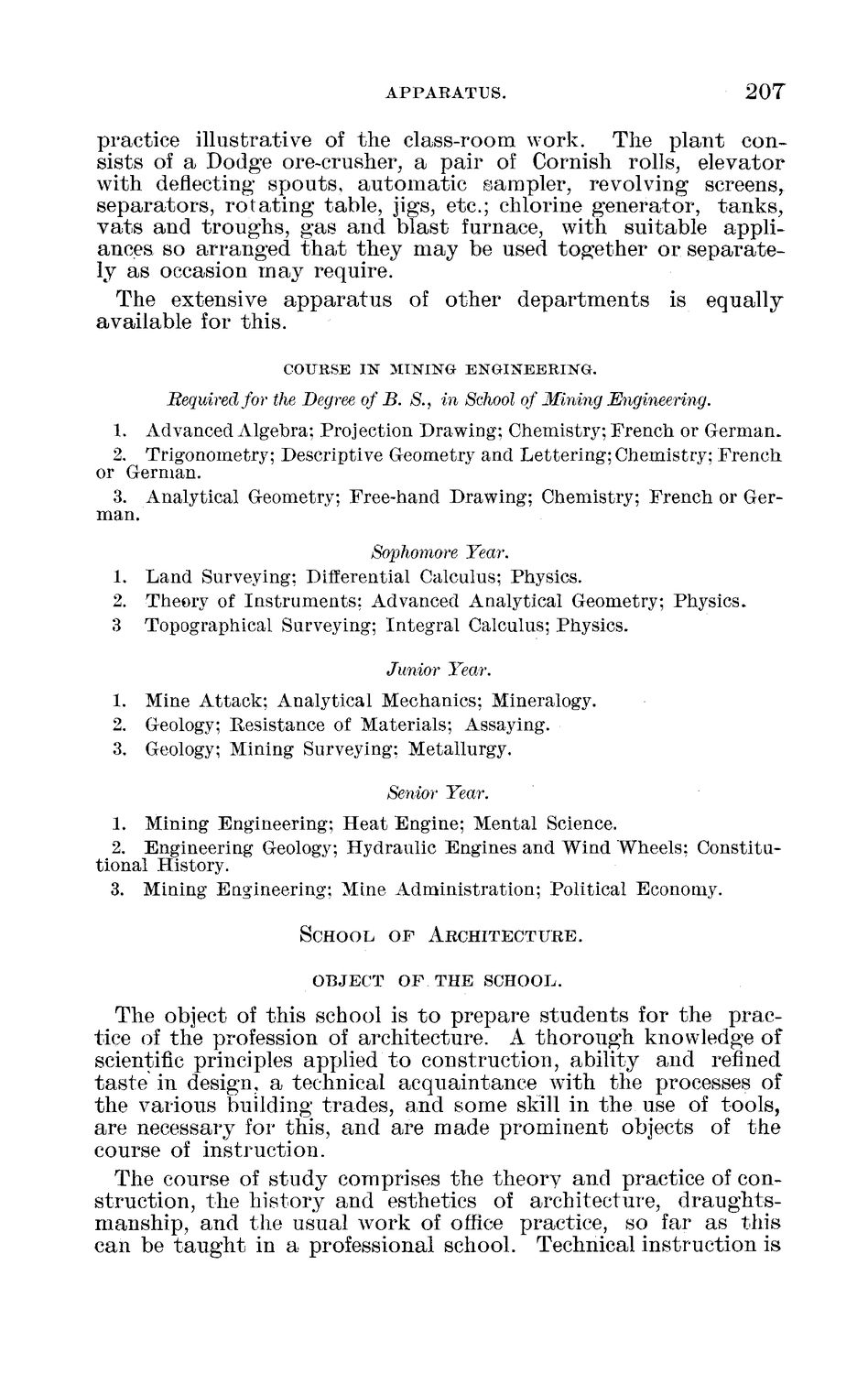| |
| |
Caption: Board of Trustees Minutes - 1890
This is a reduced-resolution page image for fast online browsing.

EXTRACTED TEXT FROM PAGE:
APPARATUS. 207 practice illustrative of the class-room work. The p l a n t consists of a Dodge ore-crusher, a pair of Cornish rolls, elevator with deflecting spouts, a u t o m a t i c sampler, revolving screens, separators, r o t a t i n g table, jigs, etc.; chlorine generator, t a n k s , v a t s and troughs, gas and blast furnace, with suitable appliances so arranged t h a t they may be used together or separately as occasion m a y require. The extensive a p p a r a t u s of other departments is equally available for this. COURSE I N M I N I N G E N G I N E E R I N G . Required for the Degree ofB. S., in School of Mining Engineering. 1. Advanced Algebra; Projection Drawing; Chemistry; French or German. 2. Trigonometry; Descriptive Geometry and Lettering; Chemistry; French or German. 3. Analytical Geometry; Free-hand Drawing; Chemistry; French or German. Sophomore Year. 1. Land Surveying; Differential Calculus; Physics. 2. Theory of Instruments; Advanced Analytical Geometry; Physics. 3 Topographical Surveying; Integral Calculus; Physics. Junior Tear. 1. Mine Attack; Analytical Mechanics; Mineralogy. 2. Geology; Resistance of Materials; Assaying. 3. Geology; Mining Surveying; Metallurgy. Senior Year. 1. Mining Engineering; Heat Engine; Mental Science. 2. Engineering Geology; Hydraulic Engines and Wind Wheels; Constitutional History. 3. Mining Engineering; Mine Administration; Political Economy. SCHOOL OBJECT OF ARCHITECTURE. SCHOOL. OF THE The object of this school is t o prepare students for the practice of the profession of architecture. A t h o r o u g h knowledge of scientific principles applied t o construction, ability and refined t a s t e in design, a technical acquaintance with the processes of the various building trades, and some skill in the use of tools, are necessary for this, and are made prominent objects of t h e course of instruction. The course of study comprises the theory and practice of construction, the history and esthetics of architecture, d r a u g h t s manship, and the usual work of office practice, so far as this can be t a u g h t in a professional school. Technical instruction is
| |